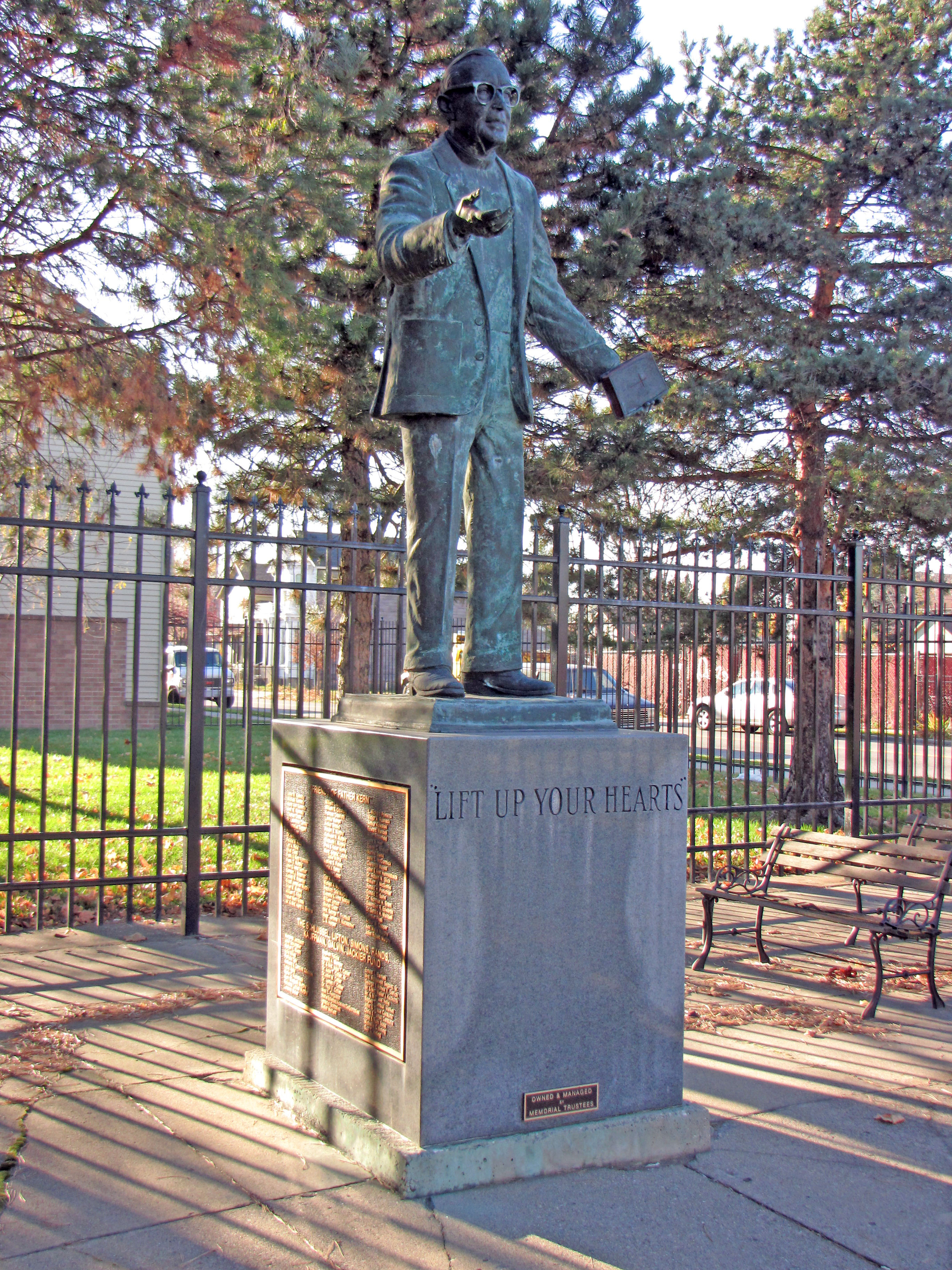

Clement Kern, born in 1907, became a priest in the Detroit Roman Catholic diocese. He spent most of his career at Holy Trinity Church in Corktown. He devoted himself to assisting immigrants who came to southwest Detroit, immigrants who followed the demographic footprints of the Irish from Cork who settled this area in the decades after the 1830s. Following World War II, many second- and third-generation white residents of Detroit moved to the fringes of the city and then to the suburbs. But the poor remained behind. This is the group that Father Kern targeted for his ministry. His church became a focal point for providing services for the poor in the days just prior to the elaboration of government-administered welfare programs. During the 1960s, governmental agencies began increasing their services for the needy and the troubled. From today’s perspective, it is difficult to appreciate that at one time those who were impoverished or troubled by mental illness or addiction could get only minimal help from governmental agencies so they often got help from private charities such as those organized by Father Kern. Time magazine published a long and laudatory story in 1960 about the generous work of this Corktown denizen.
I believe that Father Kern played a role in maintaining the Corktown neighborhood, but I am uncertain about that. Immediately after World War II, city planners in Detroit realized that new factories were being built in the suburbs. They did not want to see all those tax revenues leaving the city so they developed a master plan that called for razing the nineteenth-century homes and businesses in Corktown so that light industrial plants could be erected there. Needless to say, people in Corktown stopped investing in their properties since it seemed likely that the city would eventually strongly encourage them to leave. There was no great demand by industrial developers for land in the city of Detroit, so the neighborhood languished and declined. Then, about 1990, private individuals began rehabilitating homes in Corktown and creating the dynamic and attractive urban enclave that we find today. In its bleak years, Father Kern’s Holy Trinity Church was a mainstay of the community. Father Kern died in 1983.
This statue was executed by Edward Chasney, a sculptor born in Detroit in 1922. He served in the South Pacific theater during World War II, then returned to the Motor City where he began his career in the arts. I think that he first took up painting, but then turned to cabinet making. In the 1960s, he apprenticed with the famous Hungarian sculptor, Ferenc Varga, and then studied classical sculpture in Carrere, Italy. He died at age 85. This website includes pictures and description for three works of Ferenc Varga: the statue of Brigadier General Casmir Pulaski at Washington Boulevard and Michigan; the bust of Mikolaj Kopernik on the campus of the Detroit Public Library and the statue of Pope John Paul II in Hamtramck. Unfortunately, the pleasant statue of Father Kern is locked in a small park so you cannot get close to it. I believe that it had been defaced so an imposing and rather threatening fence was built around it. This is one of the few open air sculptures in Detroit that is secured in this fashion
Sculptor: Edward Chasney
Date of Installation: 1986
Materials: Granite and bronze
Website describing the works of Edward Chasney: http://www.venturesmith.com/chesney/chesney.htm
Time magazine description of Father Kern’s accomplishments: http://www.time.com/time/magazine/article/0,9171,894889,00.html
Photograph: Ren Farley; November 12, 2009
Description prepared: December, 2009
Return to Public Art
Return to Home Page